The Western Digital Blue (1TB) SSD Review: WD Returns to SSDs
by Billy Tallis on October 11, 2016 8:00 AM EST- Posted in
- SSDs
- Storage
- Western Digital
- SanDisk
Sequential Read Performance
The sequential read test requests 128kB blocks and tests queue depths ranging from 1 to 32. The queue depth is doubled every three minutes, for a total test duration of 18 minutes. The test spans the entire drive, and the drive is filled before the test begins. The primary score we report is an average of performances at queue depths 1, 2 and 4, as client usage typically consists mostly of low queue depth operations.
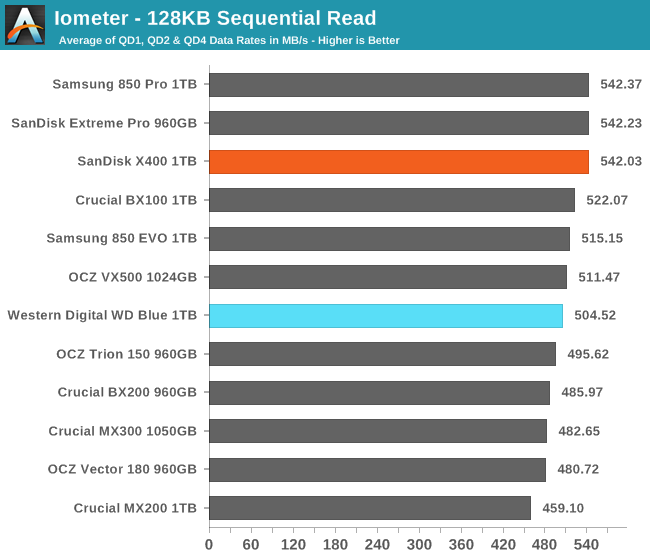
While the SanDisk X400 tied the best MLC SSDs for sequential read speed, the WD Blue is merely average overall.
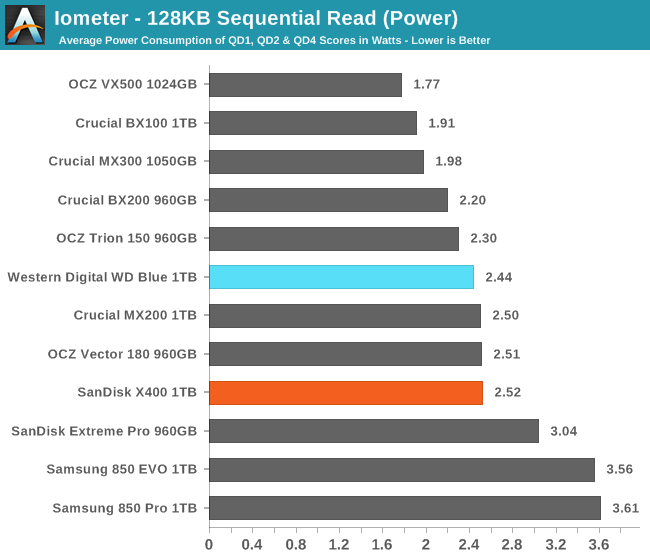
The WD Blue draws slightly less power than the X400, but given the size of the performance regression the WD Blue is actually less efficient for once.
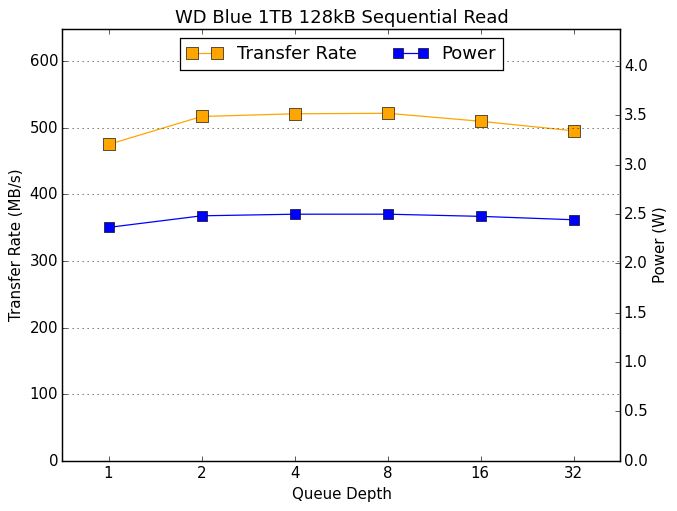 |
|||||||||
The WD Blue seems to hit a performance plateau that is a bit shy of saturating the SATA link, and then it slows down at the highest queue depths.
Sequential Write Performance
The sequential write test writes 128kB blocks and tests queue depths ranging from 1 to 32. The queue depth is doubled every three minutes, for a total test duration of 18 minutes. The test spans the entire drive, and the drive is filled before the test begins. The primary score we report is an average of performances at queue depths 1, 2 and 4, as client usage typically consists mostly of low queue depth operations.
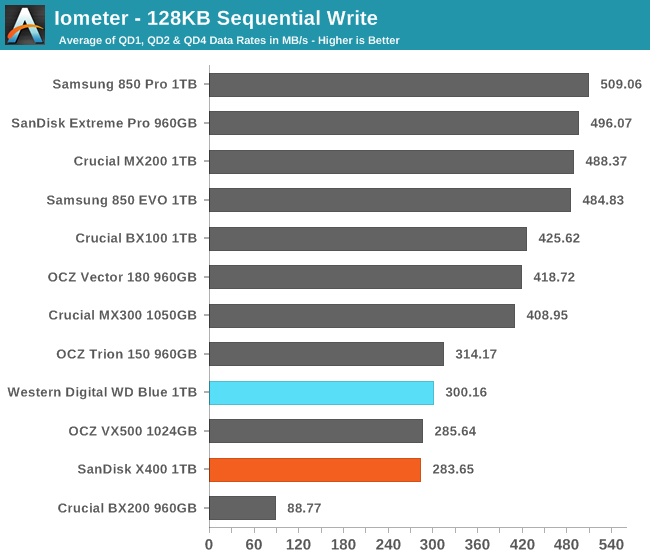
The WD Blue has a faster sequential write speed than the X400, but doesn't quite catch up to the OCZ Trion 150. Most MLC and 3D TLC drives are significantly faster than the planar TLC drives.
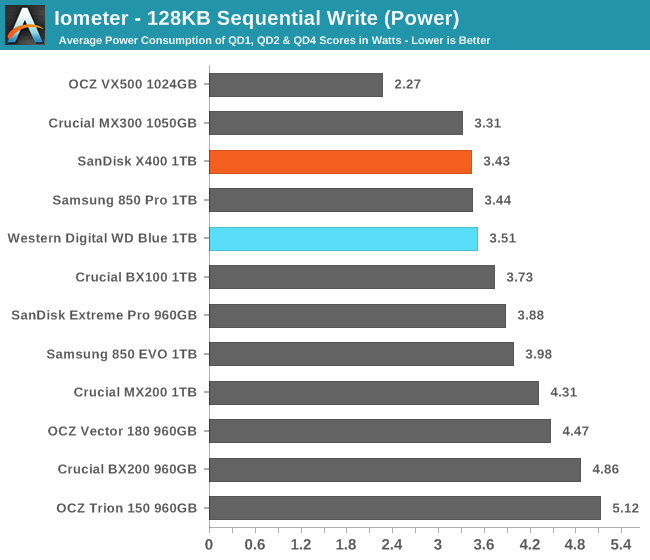
The WD Blue draws more power than the SanDisk X400 during the sequential write test, but it is justified by the improved performance. Efficiency is still only good by planar TLC standards.
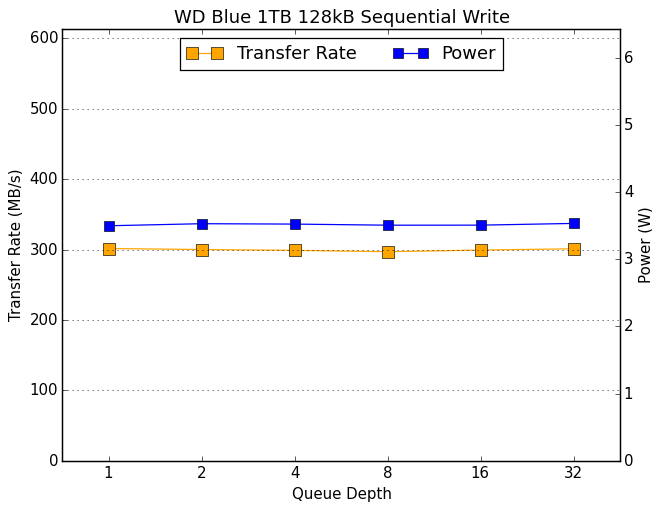 |
|||||||||
The WD Blue's sequential read speed is constant across all queue depths, without even an increase from QD1 to QD2.










75 Comments
View All Comments
SeanJ76 - Thursday, October 20, 2016 - link
You couldn't pay me to use a Samsung SSD, not after their S7 ordeal and their screw up on SSD firmware update earlier this year....Bullwinkle J Moose - Friday, October 21, 2016 - link
Never heard of the firmware screwup earlier this yearPlease provide a link
and how exactly did the S7 ordeal affect the quality of their new SSD's
I'd love to hear more!
LMF5000 - Tuesday, March 28, 2017 - link
What I'm seeing in this article is that the Samsung drives vastly outperform everything else (by a factor of 1.5x to 2x in almost all the tests) except for power draw, and yet the price difference is almost negligible (right now my favourite shop is selling the WD blue 250GB for €95.99 and the Samsung 850 Evo for €109.99). Why would anyone buy the WD over the Samsung?